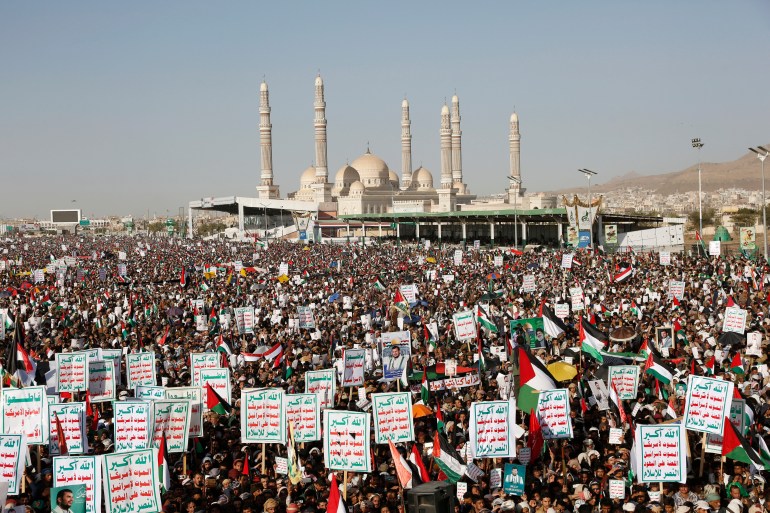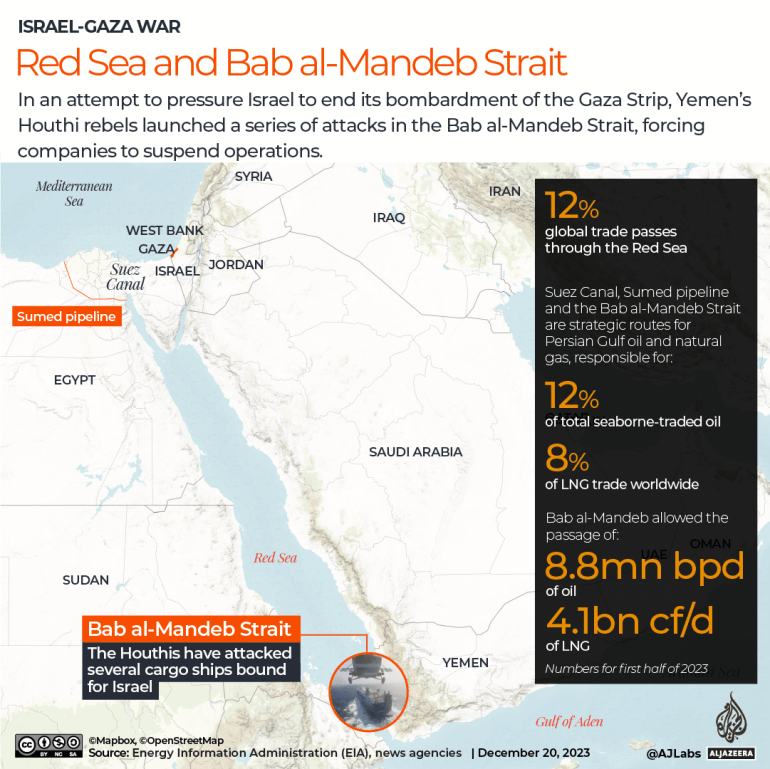The United States has approved plans for strikes in Iraq and Syria against multiple targets, including Iranian personnel and facilities, CBS News reported on Thursday, quoting US officials.
President Joe Biden said on Tuesday that he had decided how to respond to a drone attack in northeastern Jordan near the Syrian border last Sunday, which killed three US service members and wounded more than 40.
Sunday’s attack was the first to result in the loss of American lives during the Israel-Hamas war.
Here is what’s known about the US plans:
Where is the US planning to strike?
The US plans to retaliate against the drone attack on the US Tower 22 base near the border between Syria and Jordan by targeting Iranian personnel and facilities inside both countries.
The Islamic Resistance in Iraq, believed to comprise multiple groups armed, funded and trained by Iran’s Revolutionary Guards Corps, has claimed responsibility for Sunday’s strike on the base.
But on Wednesday, Kataib Hezbollah, the most powerful element in the force, announced the suspension of hostile operations against US troops. Iran itself has denied any role in the attack.
Nevertheless, according to US officials quoted in the CBS report, the US plans to press ahead with strikes of its own over several days. The timing of their launch is likely to be influenced by weather conditions.
US officials were quoted saying that “the US has the capability to carry out strikes in bad weather but prefers to have better visibility of selected targets as a safeguard against inadvertently hitting civilians who might stray into the area at the last moment”.
Hawkish Republican officials in the US have called for direct strikes on Iran, but this latest plan appears to avoid any direct attack inside the country.

What has the US defence secretary said?
Defense Secretary Lloyd Austin told reporters on Thursday that the US will not tolerate attacks on American troops.
This was Austin’s first news conference after undergoing prostate cancer surgery. During the news conference, he apologised for not disclosing his hospitalisation. Health-related questions dominated the session, during which he said he had also apologised to President Biden for not informing him about his diagnosis.
But Austin also focused on the conflict in the Middle East. Starting with the drone attack, he said the group behind the attack will be held responsible.
“I don’t think the adversaries are of a one-and-done mindset, and so they have a lot of capability, I have a lot more,” he said. “We’re going to do what’s necessary to protect our troops.”
“This is a dangerous moment in the Middle East,” Austin added.
“We will continue to work to avoid a wider conflict in the region, but we will take all necessary actions to defend the United States, our interests and our people, and we will respond when we choose, where we choose and how we choose.”
Although Iran has denied involvement, Austin said that “how much Iran knew or didn’t know, we don’t know. But it really doesn’t matter because Iran sponsors these groups”.
Since the onset of the Israel-Gaza war, the Pentagon has been ramping up its military presence in the region. In mid-December, the US reportedly had 19 US warships in the region.
Austin gave orders for the Ford – the Navy’s newest aircraft carrier – and its strike group to sail to the eastern Mediterranean on October 8, a day after the attack by Hamas that set off the war.
The Ford was sent back to the US on January 17, as the US “re-evaluate[d] its global force requirements,” the US Navy’s sixth fleet announced in a statement. With the Ford’s departure, the USS Eisenhower is the US aircraft carrier in the region.
Austin also addressed the actions of the Houthis, who say they are targeting Israel-linked ships in the Red Sea in protest over Israel’s offensive in Gaza. The Houthi attacks on shipping have disrupted international commerce along a route that accounts for about 15 percent of the world’s shipping traffic and 12 percent of global trade.

Austin said: “[They] continue to do some things that are very irresponsible and illegal and so our goal is to make sure that we continue to take away capability from the Houthis to do what they’ve been doing.”
When asked by Al Jazeera if he had done enough to pressure Israel to avoid killing civilians in Gaza, where the death toll has surpassed 27,000 since October, Austin said: “We talked to them [Israel] about that weeks ago, and they said they were going to do that, and they are doing that, but I will continue to emphasise – and I know Secretary Blinken and President Biden will continue to emphasise – the importance of addressing the issue of the Palestinian people.
“It’s critical and you know, we’re doing more, but we’re not doing enough,” he added.
How did tensions reach this point?
Since the war between Israel and Hamas broke out on October 7, Iranian-backed groups have struck US bases in Iraq and Syria at least 166 times with rockets, missiles and one-way attack drones, drawing about half a dozen US counterstrikes on group facilities in both countries.
The Houthis first launched missiles and drones at southern Israel – also in protest over the war on Gaza – in October and, as Tel Aviv continued to resist international calls for a ceasefire, they significantly ramped up their strikes. The US military also has also carried out air strikes targeting Houthi rebels in Yemen.
However, while Tehran has said it supports the Houthis politically, it denies sending the group weapons.
“The [Houthi] resistance has its own tools… and acts in accordance with its own decisions and capabilities,” Iran’s Deputy Foreign Minister Ali Bagheri said in December.
For the past few days, the US has hinted that strikes against Iranian targets are imminent.
The threat of retaliation for Sunday’s drone strike on the US base in Jordan has prompted some groups to announce they are stopping hostilities. But, as late as Thursday according to US Central Command, Yemen’s Houthi rebels were still attacking vessels and had fired a ballistic missile at a Liberian-flagged container ship in the Red Sea. The Houthis did not claim responsibility for that assault, however.
How has Iran reacted to the threat of US strikes?
Both Iran and the US have previously said they wish to avoid escalating the military fallout of Israel’s war on Gaza.
While Iran seems reluctant to be drawn into the conflict over Gaza, Hossein Salami, the commander-in-chief of Iran’s Islamic Revolutionary Guard Corps (IRGC), has warned that Tehran will respond to any US strikes.
But, quoting unnamed sources, Reuters also reported on Thursday that the IRGC have scaled back the deployment of senior officers in Syria following Israeli air strikes in an attempt to avoid being dragged directly into the conflict.
Read More: World News | Entertainment News | Celeb News
Al Jazeera









